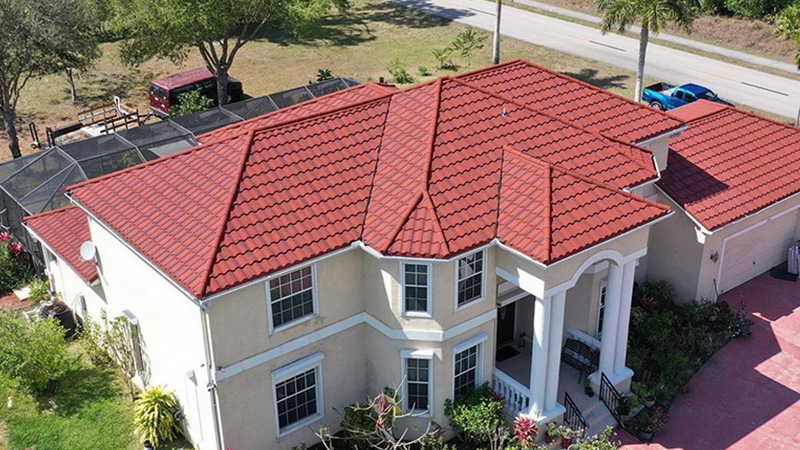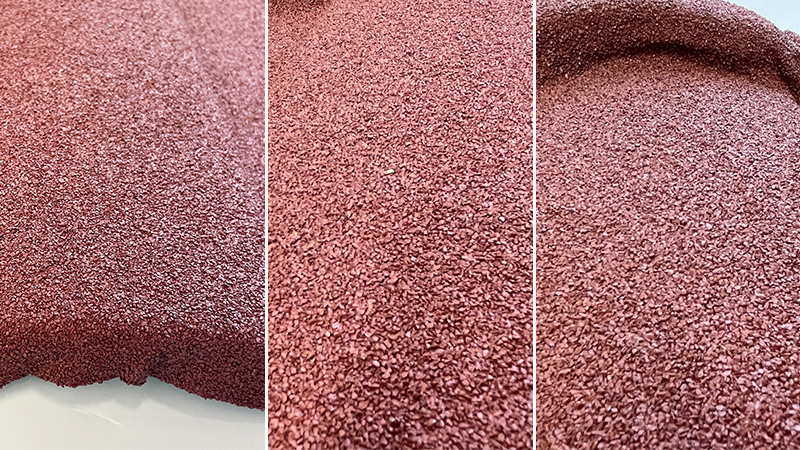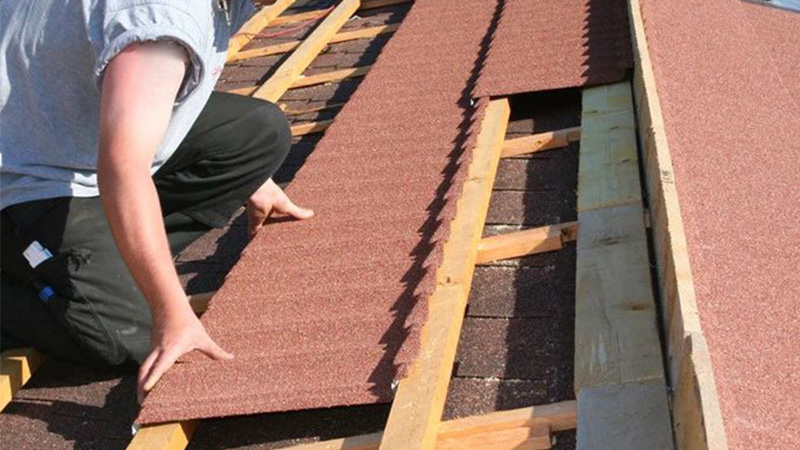
The structure, characteristics, and advantages of stone coated roofing tile
Stone coated roofing tile are a new type of high-end roofing material that combines the decorative properties of traditional tiles with the durability of modern materials. They are widely used in villas, commercial buildings, and high-end residences.
The following is a detailed analysis of its structure, characteristics, and core advantages:
1、 The structure of stone coated roofing tile
Stone coated roofing tile usually adopt a multi-layer composite structure, with clear functions for each layer:
Substrate layer
Material: High strength aluminum zinc coated steel plate (common thickness 0.4-0.6mm).
Function: Provide core support, resist compression and bending, and extend service life.
Anti corrosion coating
Process: Aluminum zinc coating (above AZ150)+chemical conversion coating.
Function: Rust resistant, salt alkali resistant, suitable for coastal or industrial polluted areas.
Adhesive layer
Material: Modified acrylic adhesive.
Function: Firmly bond the colored stone to the substrate to prevent detachment.
Colored stone layer
Material: Natural colored sand (basalt or quartz sand) sintered at high temperature.
Function: Provide color and texture, simulate the visual effect of natural stone.
Protective Layer
Process: Surface fluorocarbon or acrylic transparent coating.
Function: UV resistant, weather resistant, and maintain long-lasting bright colors.

2、 The core characteristics of stone coated roofing tile
Lightweight
The weight is only 5-7kg/㎡ (traditional ceramic tiles are about 40kg/㎡), reducing roof load and saving building structure costs.
High durability
Strong weather resistance: Through 3000 hours of salt spray testing and temperature difference cycling testing between -40 ℃ and 120 ℃, the service life can reach 30-50 years.
Decorative diversity
Rich in colors (red, blue, gray, etc.), the surface can imitate textures such as slate and wood grain, suitable for different architectural styles.
Convenient construction
Modular design, which can be directly nailed or locked for installation, increases construction efficiency by more than 50% compared to traditional tiles.
Environmentally
Recyclable, with no harmful substances released during the production process, in compliance with green building standards.
 3、 The prominent advantages of stone coated roofing tile
3、 The prominent advantages of stone coated roofing tile
Comparison Dimension
Colored Stone Coated Roofing Tile
Traditional Ceramic Tile/Cement Tile
Wind-resistant performance
Can withstand typhoons of level 12 or above (tested by ASTM D3161)
Is fragile and has poor wind resistance
Waterproofness
Seamless splicing+metal substrate, 100% leak proof
Dependent on slope, prone to leakage
Maintenance cost
Almost maintenance free, partial damage can be replaced individually
Regular maintenance is required, and the cost of replacement is high
Fire rating
A-class non combustible material (GB8624 standard)
B-level or lower
Scope of application
Both flat top and sloping top are applicable (slope ≥ 10 °)
Only applicable to sloping roofs
4、 Typical application scenarios
High end residential properties:such as villas and resorts, emphasize aesthetics and durability.
Commercial buildings: hotels, scenic area buildings, require rapid construction and low maintenance.
Extreme climate regions: Multiple typhoons, high ultraviolet radiation, or highly corrosive environments.

5、 Purchase precautions
Color sand quality: High quality color sand has a long-lasting color, while inferior products are prone to fading.
Substrate thickness: It is recommended to choose aluminum zinc coated steel plates with a thickness of 0.5mm or more in coastal areas.
